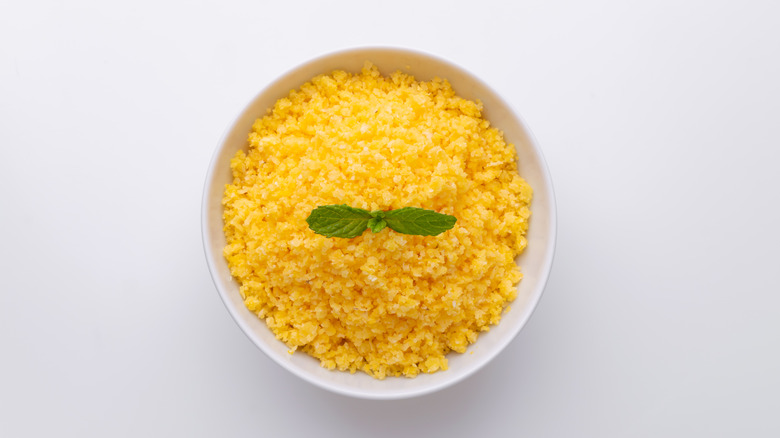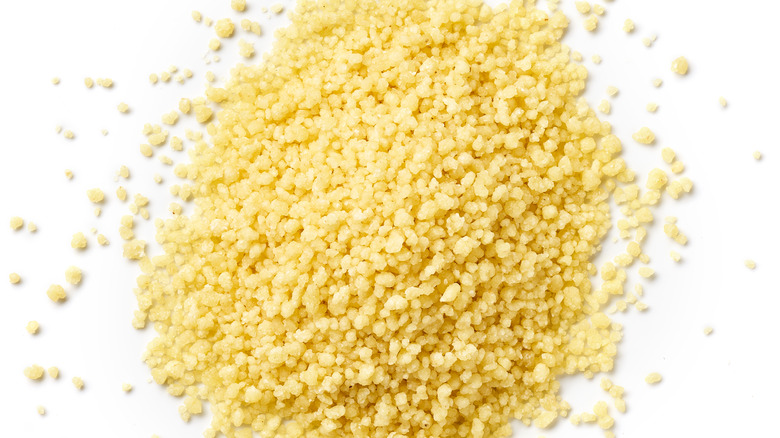Why You Need To Let Couscous Rest
We could all use a rest. And the delicate little pearls of couscous are no exception.
Even though couscous looks like a grain, it's technically a pasta, according to MasterClass, and it's made from a mixture of water and semolina flour from durum wheat. There are three different types of couscous: Moroccan, which is the smallest; Israeli, which is roughly the size of peppercorns; and Lebanese, the largest, via the BBC.
Couscous is a staple Mediterranean ingredient, and a healthy alternative to rice. Who hasn't fallen into the mid-week meal slump and come face-to-face (or stomach) with pasta fatigue. Couscous is an ideal substitute, and even functions well as a main dish, like in this recipe with green olives and almonds. But, as enticing and numerous as its uses are, the key ingredient in any successful couscous is patience. Especially in a dish as simple as couscous, the little details make a big difference. Letting your couscous rest is crucial to good texture — and here's why.
Resting softens the pearls
Al Dente pasta is one thig, but have you ever bitten into a mouthful of undercooked rice? It's inedible. Despite being a pasta and not a grain, couscous is very similar in texture to rice, and like rice it must be adequately softened before it's ready for the dinner plate.
California restaurant critic Tejal Rao of the New York Times advises that resting rice for 10 to 15 minutes is crucial. As the rice rests, covered, off the heat, she says, it absorbs more liquid and continues becoming tender. If you skip this pivotal step and don't let the rice rest, you risk ending up with a too-tough waste.
The culinary voices at couscous-purveyor Bob's Red Mill agree. Since couscous is a pasta instead of a grain, and therefore requires less cooking time, Bob's Red Mill suggests letting cooked couscous stand for 5 minutes after removing from heat. Then, fluff with a fork and dig in — finally. Your light, airy mouth-full will thank you.

